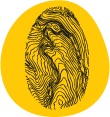
Landscape preference on different scales
The rural landscape usually consists of a set of different landscape elements, i.e. crop-fields, meadows, hedgerows or high-stem orchards. In order to monitor such a landscape, a simple way is to assess the attractiveness of this landscape applying a method based on a preference value for each type of landscape element and its surface. The method by Hoisl et al.(1989), described by Schüpbach et al. (2008), measures, based on this approach, the contribution of the perception factor ‘Naturalness’ to landscape preference. It can be evaluated for a singular farm, a singular farm type, a region or a whole landscape type.
‘Naturalness’ is a common concept for measuring one aspect of landscape preference (Tveit et al. 2006). In most cases it attributes low values to surfaces with (intensive) agricultural land-use and high values to near nature surfaces (Lee et al, 1999). However, in most cases, the preference values of the different crop types do not differ from each other. Furthermore, for Ecological Compensation Areas (ECAs), introduced in the 1990s, no values for the ‘Naturalness’ perception factor are defined. Therefore, in 2006 a Swiss-wide survey was conducted to evaluate the preference values for the most frequent and common crop types, meadows and ECAs of the Swiss Lowland. Pictures of seven crops and seven ECAs in four to five different stages were shown to 4000 participants. The results show, that on average, landscape elements with a complex structure in vegetation and / or a colourful flowering, in most cases ECAs, were rated higher than monotonous or brownish landscape elements. Furthermore, flowering had also a positive effect on crops and intensively managed meadows (Schüpbach et al. 2009). As this result is concordant with the concept of ‘Naturalness’, the approach, using perception values and surfaces of landscape elements can be applied for evaluating the single plot, the whole farm and ultimately the landscape thus addressing different scales.
The survey provides for each evaluated landscape element, besides the average preference values, the seasonal change of its preference value between spring and autumn. Further analysis have shown, that landscapes differing in their mix of crops, intensively managed meadows, ECAs and high stem orchards are different in the evolution of their seasonal preference value. Thus, different landscapes might differ in the shape of their ‘preference curve’ (see additional material). This enables to apply a second, often used concept for measuring landscape preference: ‘Variety’ or ‘Diversity’ (Sang et al. 2008, Tveit et al. 2006). The variety of such curves might be used to describe the ‘Variety’ or ‘Diversity’ of landscapes on a regional scale.
The challenge will be, to get reference curves for different landscape types. Ideally they can be constructed out of the seasonal perception values of the single landscape element which have to be actualised over time and updated concerning the evaluated landscape elements.
Hoisl, R., Nohl, W., Zerkon, S., Zöllner, G., 1989. Verfahren zur landschaftsästhetischen Vorbilanz. Materialien zur Flurbereinigung – Heft 17. Bayerisches Staatsministerium für Ernährung, Landwirtschaft und Forsten; München.
Lee, J.T., Elton, M.J., Thompson, S., 1999. The role of GIS in landscape assessment: using land-use-based criteria for an area of the Chiltern hills area of outstanding natural beauty. Land Use Policy 16, 23–32.
Sang, N. Ode, A., Miller, D., 2008. Landscape metrics and visual topology in the analysis of landscape preference. Environment and Planning B: Planning and Design, 35 (2008) 504-520.
Schüpbach, B., Junge, X., Briegel, R., Lindemann-Matthies, P., Walter, Th., 2009. Ästhetische Bewertung landwirtschaftlicher Kulturen durch die Bevölkerung. Art-Schriftenreihe 10, Mai 2009.
Schüpbach, B., Zgraggen, K., Szerencsits, E., 2008. Incentives for low-input land-use types and their influence on the attractiveness of landscapes. Journal of Environmental Management 89 (2008), 222-233
Tveit, M., Ode, A., Fry, G., 2006. Key Concepts in a Framework for Analysing Visual Landscape Character. Landscape Research, 31(3), 229-255
